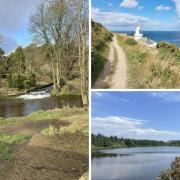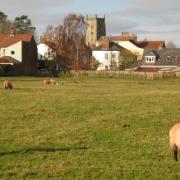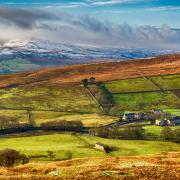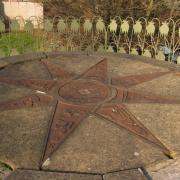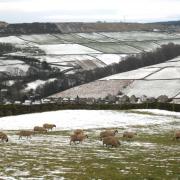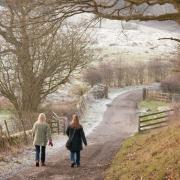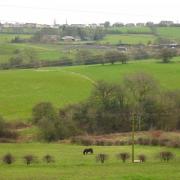Rediscover some of the most visited moorlands in Yorkshire high above the spa town of Ilkley. Terry Fletcher is your guide
Despite having few truly ancient buildings Ilkley is steeped in history, as this walk proves. The story of Man was old here long before the Romans came along the Wharfe Valley and named it Olicana. People had already been living on the moor for thousands of years and left their mark in hundreds of strange ‘cup and ring’ carvings.
The ‘cups’ are small shallow depressions pecked into the surface of rocks, singly or in apparently haphazard groups and frequently surrounded by small circular channels, the rings. Ilkley is particularly rich in carvings with well over two hundred stones recorded and new ones regularly being found. Similar markings have been discovered from Scotland to the Mediterranean but no one is really sure what they mean or even when they were made.
Dates vary from the Stone Age to the Bronze Age and theories range from prehistoric art to ritual meaning, ownership claims, navigational aids or perhaps a mixture of them all. This walk takes in various stages of Ilkley’s history, beginning in its Victorian heyday.
Directions
It starts from the top of Wells Road in the car park at Darwin Gardens, named after Charles Darwin, who visited in 1859, the same year his seminal work On the Origin of Species was published. Darwin claimed the ‘water cure’ had done him ‘much good’ – at least until he sprained his ankle walking on the moor.
From the car park turn right up the road for 300 yards until a public footpath sign on the left indicates the way to White Wells. This is the obvious group of buildings on the moor’s flank and where Darwin plunged into the freezing water spilling off the moor into a bath house, which can still be used.
After looking round continue up the moor along the Millennium Way. The path curls into Rocky Valley, the playground of climbers for more than a century. However just before the first major buttress take a fork in the path to climb a flight of steep stone steps. At the top the view northwards opens out to reveal some of the Dales tops and the white golf balls of the listening station at Menwith Hill.
At a crossroads of paths by a stream continue straight ahead. The moor is littered with examples of cup and ring carvings and shortly after the crossroads a large rock in the centre of the path bears a very obvious example.
Eventually stones of a more recent vintage appear. Huge flags reclaimed from now-redundant West Riding Mills have been used to cross the boggier sections of the path. After a final boggy rise the path reaches the moor rim just to the left of a standing boundary stone, Lanshaw Lad, which is reputed to date from Anglo-Saxon times though the carvings are much more recent.
From here continue along the main path, heading slightly leftwards to the mini-Stone Circle of the Twelve Apostles. This is the most striking monument on the moor – though with the largest stone only three feet or so tall it is no Stonehenge – and is also possibly the least authentic. It looks suspiciously intact and in fact has been destroyed and restored several times in the 20th century alone. Its origins and uses are lost in the mists of time but modern heathens come here for ceremonies at various times of the year. It is also known locally at the Druidical Dial but whether the name is significant of merely wishful thinking no one can truthfully say.
From the Apostles continue along the main track towards the distant buildings of Leeds; after a couple of hundred yards the track forks. Take the left hand branch to drop past the tiny reservoir of High Lanshaw Dam.
At a marker stone by a group of boulders just before a prominent wooden building take a path dropping leftwards towards Lower Lanshaw Dam. Go past this and after about a quarter of a mile at a crossroads of paths take the sharp left track which seems to curl back onto the moor but after 100 yards take the right hand fork to cross the gully. Once across the stream take the track to the right to contour round the edge of the moor and drop to a stone wall and path. Follow the track leftwards all the way to the local landmark of the Cow and Calf Rocks overlooking Ilkley.
From here take the track below the huge detached boulder of the Calf. This can be quite rough going in places and demands some agility. However this section can be easily avoided by walking down the road into town.
The track itself degenerates into a myriad of smaller paths but almost any can be taken with the large block of the former teacher training college ahead as a guide. The paths eventually emerge by the long ribbon of Ilkley Tarn. Pass this and follow the tarmac path to the road and car park.
Fact File
Start/finish: Darwin Gardens car park, Wells Road. Ilkley can also be reached by train and bus from Leeds and Bradford.
Distance: 6 miles/9.5kms Time: 4 hours
Terrain: Rough moorland walking, boggy in places, tricky section from Cow and Calf to Ilkley can be avoided by short road section.
Refreshments: Spoiled for choice in Ilkley



